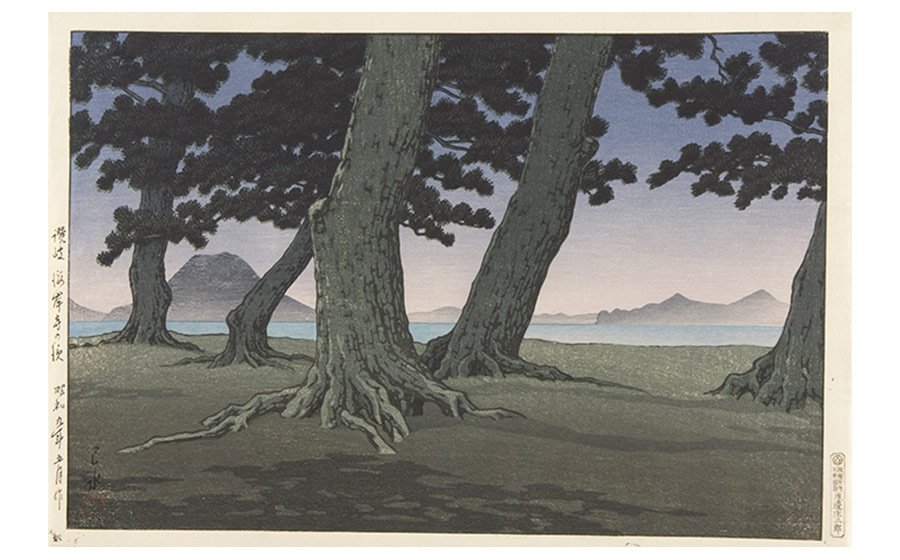Japanese publisher Shozaburo Watanabe started his business in the early 20th century, hiring a new generation of artists and craftsmen to create Japanese prints in the time-honored woodcut tradition of Hokusai and Hiroshige.
To distinguish his prints, Watanabe coined the term “shin hanga” or new prints, a term that is now the generic name for the style his workshop pioneered. Like the prints of the previous century, his were colorful images of Japan’s people and natural beauty. However, Watanabe actively courted the international market with a fresh, western-influenced style so that the prints he published appealed to European and American art-lovers. Combining Japanese techniques with subjects with Western sensibilities, they established a new aesthetic in the print market.
Watanabe’s designers were mostly Japanese, but he also created prints designed by American and European artists. Although the styles of the prints were new, Watanabe’s shop was very traditional. He hired and directed the designers, block-cutters and printers who made the prints.
Many of Watanabe’s most innovative prints, made at the beginning of his publishing career, are rare; the Kanto earthquake of 1923 destroyed his shop, including stored prints and the blocks they were made from. This exhibition brings together many of these early prints as well as later impressions to tell the story of the workshop that set the standard for the new generation of print publishers.
Exhibition curator Andrew Stevens is Distinguished Curator of Prints, Drawings, and Photographs at the Chazen Museum of Art, has published on a variety of subjects from the prints of 18th century printmaker, William Hogarth, to the color woodcut in Japan, Europe and America. He is an expert on connoisseurship and history of print, early 20th century color woodcuts in Japan, America and Western Europe, and the prints of Hiroshige. He has organized more than 60 exhibitions and eight catalogs of prints, drawings and photographs.
This exhibition was organized by the Chazen Museum of Art, University of Wisconsin-Madison. The exhibition is funded with support from Kikkoman Foods Foundation, Inc., the John H. Van Vleck Estate Fund, and a grant from the Wisconsin Arts Board with funds from the State of Wisconsin and the National Endowment for the Arts.
